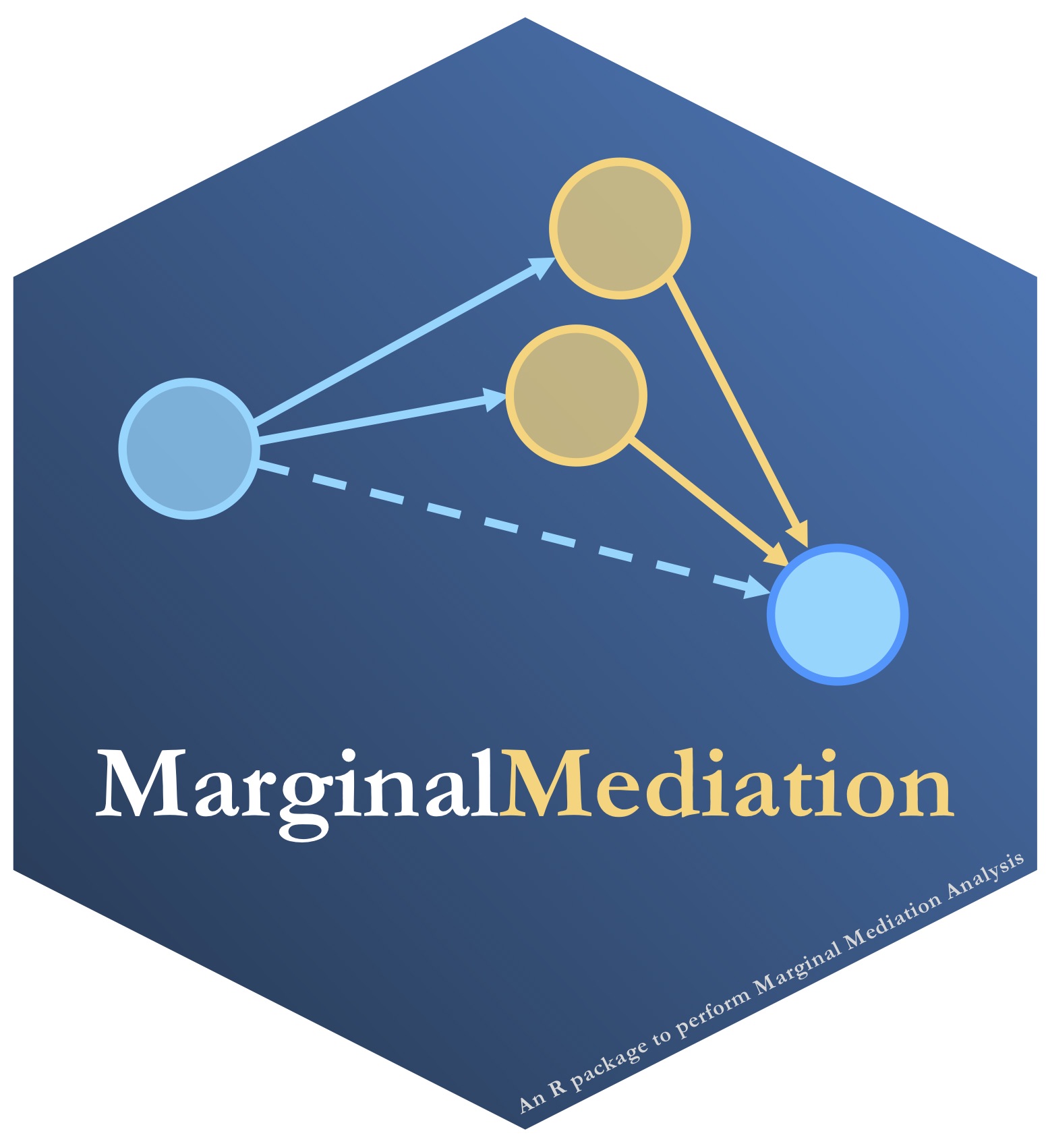v 0.7.2

The MarginalMediation package provides the ability to
perform marginal mediation analysis. It provides a
useful statistical framework from which to interpret the coefficients in
a mediation analysis, especially when the mediator(s) and/or outcome is
binary or a count (other types of outcomes will be added).
You can install it via:
install.packages("MarginalMediation")or
install.packages("remotes")
remotes::install_github("tysonstanley/MarginalMediation")The main function is mma():
mma(...,
ind_effects = c("apath-bpath"))where ... consists of 2 or more model objects. The first
is the b and c' path model, while the others
are the a path models.
The ind_effects is a vector of requested mediated paths.
These estimates are in terms of the average marginal effects using the
a x b method of estimating indirect paths. Any number of
these can be included, although it is limited to the number of variables
available in the models.
Below is an example, where the theoretical backing of such a model is not very stable, but it is useful to show how to use the function and the output.
## Data for the example
library(furniture)
data(nhanes_2010)## The MarginalMediation package
library(MarginalMediation)#> ℹ Loading MarginalMediation
#> ── MarginalMediation 0.7.2 ─────────────────── learn more at tysonbarrett.com ──
#> ✓ MarginalMediation attached
#> ✓ No potential conflicts foundpathbc <- glm(marijuana ~ home_meals + gender + age + asthma,
data = nhanes_2010,
family = "binomial")
patha <- glm(home_meals ~ gender + age + asthma,
data = nhanes_2010,
family = "gaussian")
mma(pathbc, patha,
ind_effects = c("genderFemale-home_meals",
"age-home_meals",
"asthmaNo-home_meals"),
boot = 500)
#>
#> calculating a paths... b and c paths... Done.
#> ┌───────────────────────────────┐
#> │ Marginal Mediation Analysis │
#> └───────────────────────────────┘
#> A marginal mediation model with:
#> 1 mediators
#> 3 indirect effects
#> 3 direct effects
#> 500 bootstrapped samples
#> 95% confidence interval
#> n = 1417
#>
#> Formulas:
#> ◌ marijuana ~ home_meals + gender + age + asthma
#> ◌ home_meals ~ gender + age + asthma
#>
#> Regression Models:
#>
#> marijuana ~
#> Est SE Est/SE P-Value
#> (Intercept) -0.39400 0.38028 -1.03608 0.30017
#> home_meals -0.04062 0.01363 -2.98051 0.00288
#> genderFemale 0.43161 0.11723 3.68169 0.00023
#> age 0.00276 0.01470 0.18754 0.85123
#> asthmaNo -0.00717 0.15004 -0.04778 0.96189
#>
#> home_meals ~
#> Est SE Est/SE P-Value
#> (Intercept) 6.56883 0.76462 8.59100 0.00000
#> genderFemale -1.34831 0.23910 -5.63913 0.00000
#> age -0.05689 0.03017 -1.88565 0.05955
#> asthmaNo -0.00428 0.31293 -0.01368 0.98909
#>
#> Unstandardized Mediated Effects:
#>
#> Indirect Effects:
#>
#> marijuana ~
#> Indirect Lower Upper
#> genderFemale => home_meals 0.01312 0.00357 0.02435
#> age => home_meals 0.00055 0.00000 0.00143
#> asthmaNo => home_meals 0.00004 -0.00652 0.00596
#>
#> Direct Effects:
#>
#> marijuana ~
#> Direct Lower Upper
#> genderFemale 0.10430 0.04950 0.16045
#> age 0.00066 -0.00652 0.00793
#> asthmaNo -0.00172 -0.07896 0.06809The print method provides:
a paths,b paths,The regressions are in their original (non-AME) units while the indirect and direct effects are in the AME units—the units of the outcome—in this case, risk of using marijuana.
Let me know if you find any bugs or want to discuss the method (t.barrett@aggiemail.usu.edu).